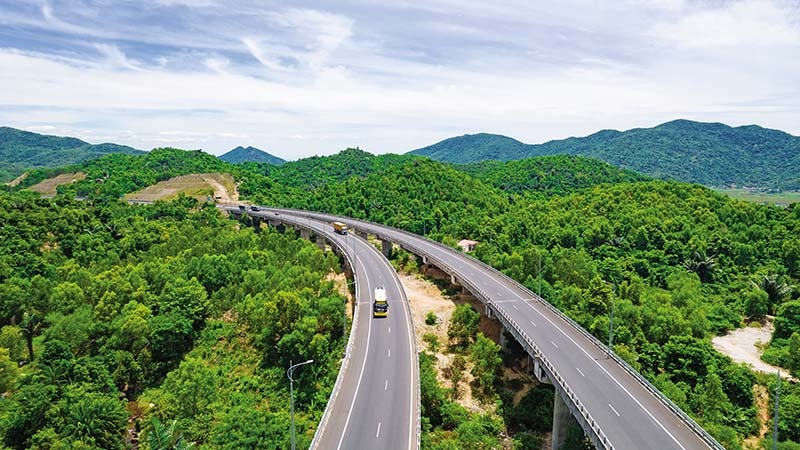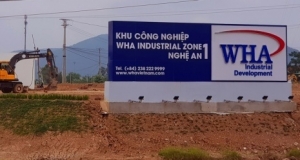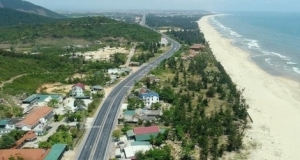Huge transport investment expected to vitalise central regions
For over a month now, relevant personnel at the Ministry of Transport is busy with the final preparations to soon hand over Khanh Hoa-Buon Ma Thuot Expressway to the people’s committees of Khanh Hoa and Dak Lak provinces.
In light of Decision No.17/QD-TTg dated July 28, two out of three components under Khanh Hoa-Buon Ma Thuot Expressway will be assigned to two localities having the road passage for management.
The 32km-long first component with an estimated investment value of $244.8 million will be assigned to Khanh Hoa's People’s Committee while the 48km-long third component valued at around $282 million will be assigned to Dak Lak's People’s Committee.
The 37.5km second component with a value reaching $426.8 million will be managed by the Ministry of Transport (MoT) as the road section lies in both localities and features complex terrain.
 |
| Building a comprehensive highway network is one of the government priorities |
With more than 117.8km of total length, once completed by 2026, the project not only provides the shortest and most convenient way from the Central Highlands to the sea but also significantly enhances links between Vietnam’s two major economic regions.
In mid-July, the MoT greenlit 12 component projects belonging to the North-South Highway’s eastern part in the 2021-2025 period and assigned relevant project management units to act as the developers.
According to Deputy Minister of Transport Nguyen Duy Lam, the MoT has required these to scale up preparations to be able to complete procedures on selecting consultants in July to ensure project kick-off late this year.
During 2021-2025, 10 out of 12 component projects of the North-South Highway’s eastern part will be taking place in the central region with a total length reaching 620km.
If taking into account the 565km belonging to the North-South Highway’s eastern part in the 2017-2020 period which is being implemented by the MoT, the total passage of the North-South Highway in the central region will reach 1,200km.
| During 2021-2025, 10 out of 12 component projects of the North-South Highway’s eastern part will be taking place in the central region with a total length reaching 620km. |
Along with bolstering a road backbone in the central region, during 2021-2030 the MoT sets to concentrate resources on connecting the Central Highlands with localities in the southcentral coastal region.
According to the MoT, as of now, the prime minister has ratified four out of five national planning schemes, one of the fresh points in those approved schemes is mobilising private sector resources into expediting major infrastructure works with high spillover effects and promoting regional linkage between the Central Highlands and southcentral coastal and northcentral regions to best avail of the Central Highlands’ potential.
Accordingly, along with upgrading existing roads, in the next decade, the MoT will be joining efforts with relevant ministries, sectors, and localities to mobilise resources into shaping up a comprehensive road system connecting the Central Highways with the southcentral coastal region, Laos, and Cambodia through four road axles.
One will be running from Bo Y border crossing to Quang Nam seaport, one from Le Thanh border crossing to Quy Nhon seaport, one from Nam Giang international border crossing to Quang Nam seaport, and the remainder from Dak Lak province to Nam Van Phong seaport in Khanh Hoa province.
 | Aiding development in the central region with diversified capital sources In addition to the rapid disbursement of public investment capital, a series of foreign businesses in the central region have embarked on sizable projects. |
 | Transport infrastructure creates momentum for localities Localities in Vietnam’s northcentral and central region are completing important transport infrastructure works to promote interregional connectivity, one of the factors instrumental to their breakthrough development. |
 | Solutions towards sustainable urban transport development Despite actions to develop urban transport infrastructure, Vietnam still faces many obstacles on the path. Nguyen Ngoc Dong, Deputy Minister of Transport, writes about international lessons and future orientations to increase both efficiency and sustainability. |
In light of the PM’s approved planning schemes, the total capital value to invest in the transport infrastructure system in the Central Highlands region fetches around $6.78 billion.
To soon get the projects out of the drawing board, the MoT has proposed the competent authorities push up decentralisation for relevant localities in infrastructure investment, particularly road, railway, and airport projects to create safe, economical, and efficient transport infrastructure, and promote the sense of initiative of the localities, helping to best avail of diverse investment resources into transport infrastructure development.
What the stars mean:
★ Poor ★ ★ Promising ★★★ Good ★★★★ Very good ★★★★★ Exceptional
 Tag:
Tag:
Related Contents
Latest News
More News
- Global partnerships key to Vietnam’s IFC development (December 26, 2025 | 16:18)
- Vingroup pulls out of bid to invest in North-South high-speed railway (December 26, 2025 | 11:42)
- Strengthening supply chains through trade promotions and customs reform (December 24, 2025 | 14:00)
- PM orders investment model for North–South high-speed rail (December 22, 2025 | 17:43)
- LS Eco Energy to invest in Vietnam rare earth sector (December 22, 2025 | 17:31)
- Government moves to establish International Financial Centre (December 21, 2025 | 21:00)
- Vietnam's IFC to target global investment flows (December 21, 2025 | 18:00)
- Two national hospitals expand capacity with new facilities (December 20, 2025 | 09:00)
- Ha Tinh breaks ground on major Vingroup industrial and energy projects (December 19, 2025 | 18:24)
- EVN launches major power infrastructure projects nationwide (December 19, 2025 | 18:17)





























 Mobile Version
Mobile Version